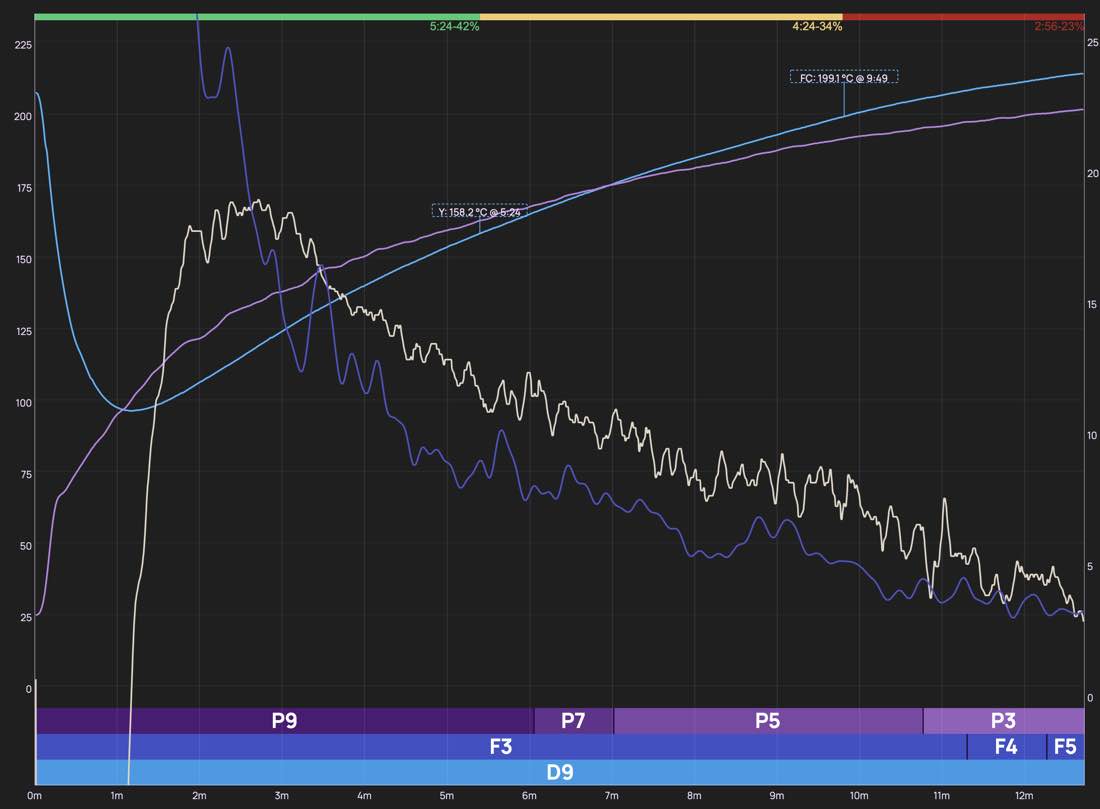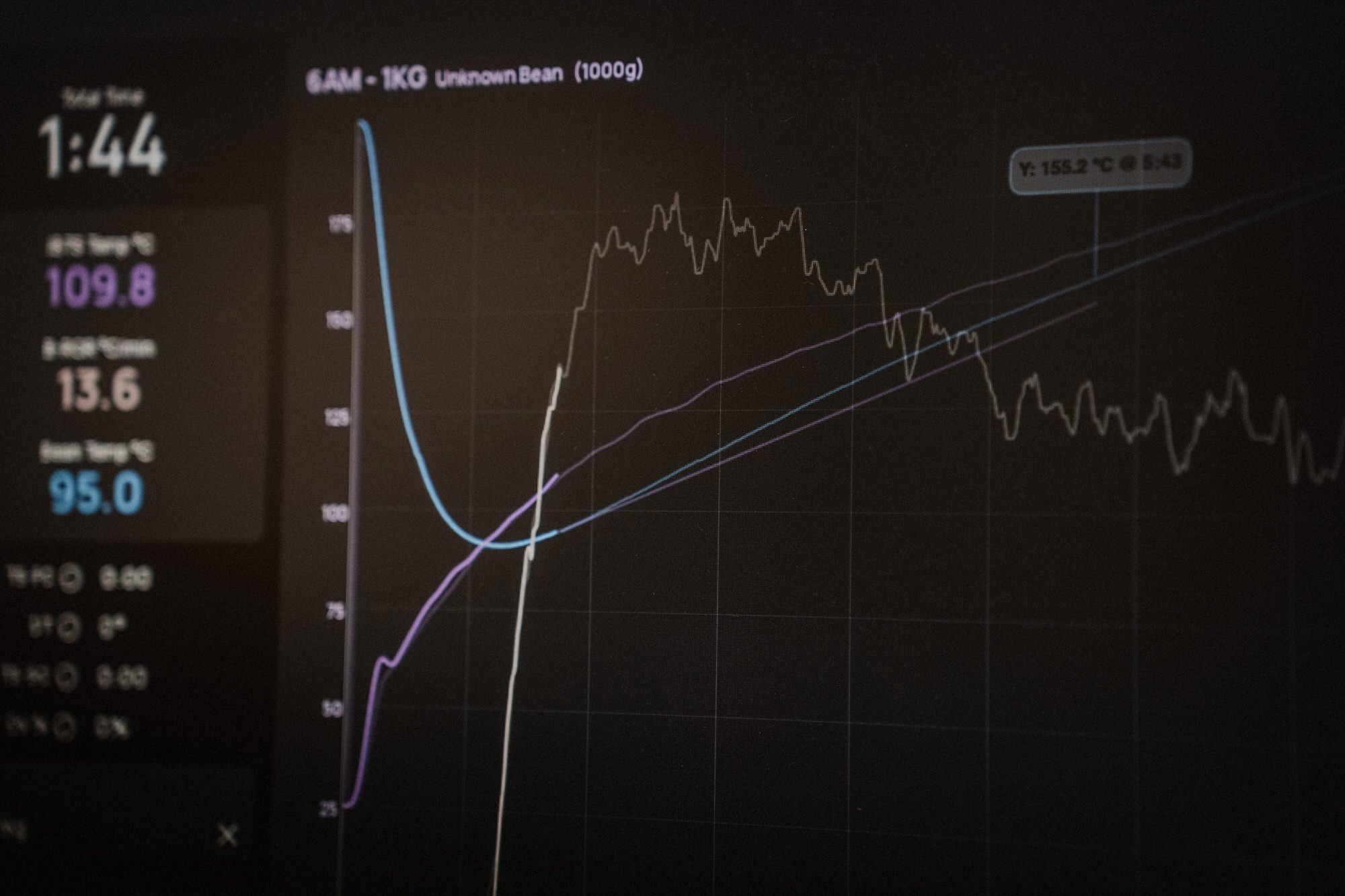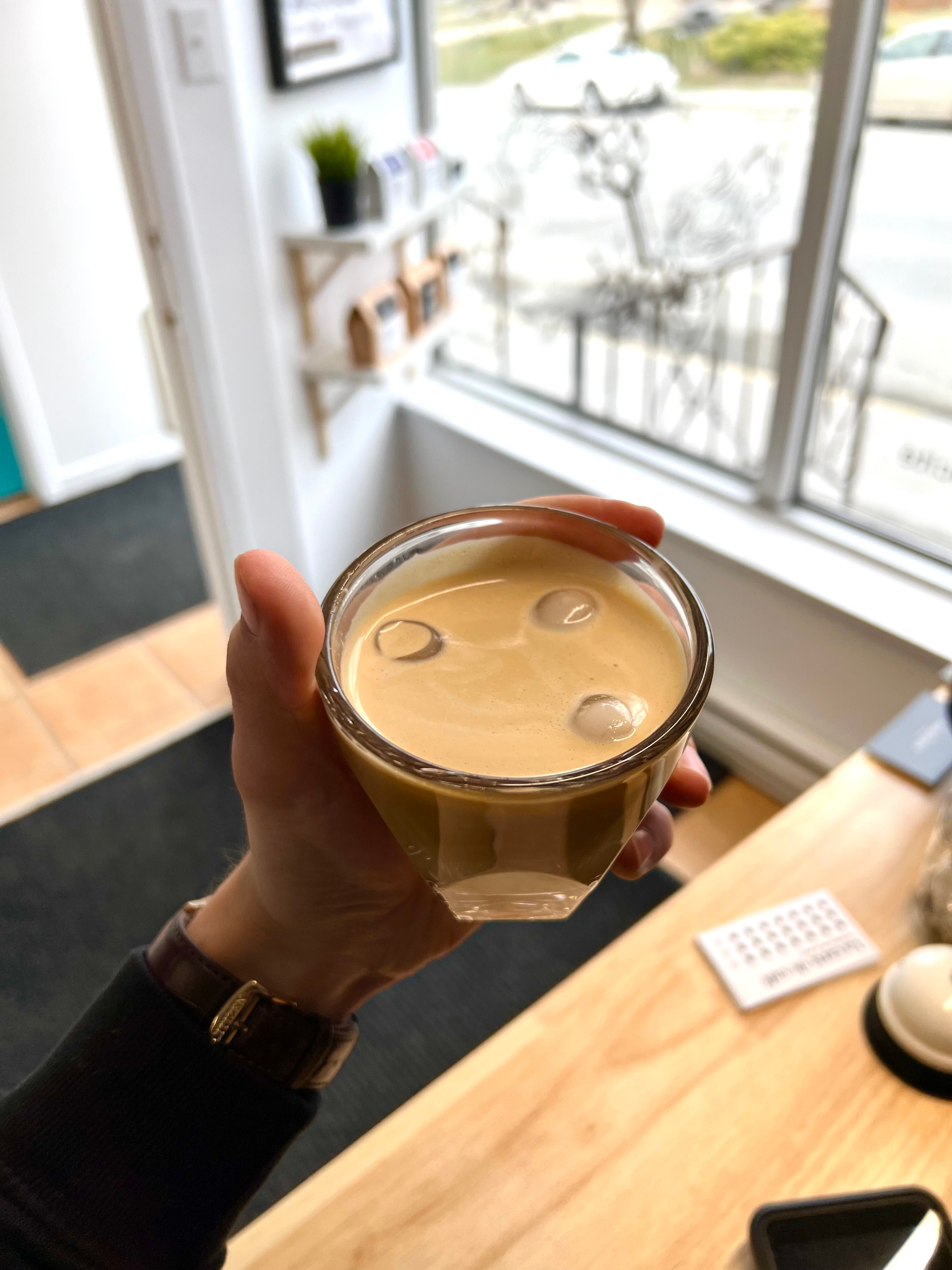Free shipping across Canada 2 bags or 1kg 🤩
Rate Of Rise (RoR) : When It's Useful For Coffee Roasting
Last edit Jun 18, 2024 ● Published Jun 18, 2024 ● Jasmin Tétreault
This is a topic that stirs debate among coffee roasters worldwide: the Rate of Rise (RoR) in coffee roasting. There seem to be many misconceptions about RoR being the ultimate guide for improving roast profiles. Through experimentation and scientific knowledge, I've found that this concept is more of a secondary parameter instead of a coffee-roasting foundation. This article aims to clarify where RoR can be useful and where it falls short, how to calculate it, and its relevance in the coffee roasting process.
What is the Rate of Rise
Rate of Rise (RoR), or Rate of Change, tracks how fast the coffee bean’s temperature increases during roasting. This metric highlights the speed of heat absorption from the roasting machine. It's important to differentiate RoR from the bean's actual temperature; while temperature shows the bean's current state, RoR shows the rate of that change.
Roasters gain insights into the roasting process by analyzing RoR data on a roast graph. Roast curves show temperature changes over time. RoR offers a dynamic view of temperature increases, helping roasters make timely adjustments for consistent profiles. It allows them to maintain control, anticipate changes, and avoid mistakes affecting flavor and quality. RoR predicts roast progress, aiding in hitting targets like the first crack. RoR post-first crack can also help to know development times.
Calculating the Rate of Rise
The Rate of Rise is essentially the Rate of Change formula, which measures how one variable changes relative to another. In coffee roasting we measure degrees over time.
Rate of Rise Formula
The Rate of Rise formula is calculated as Δy/Δx, or (y2 - y1) / (x2 - x1). In this case Y is degrees and X is the time. This will give you a number of degrees over time.
Data Collection
Modern roasting tech and specialized software simplify collecting RoR data, enabling roasters to capture temperature at intervals of 1, 15, 30, or 60 seconds. Using the 60 seconds or 1 minute measurement is the simplest way to think about it, the same way we think about speed in km/h and not km/15 min.
If you don't have access to specialized software, manually calculating RoR is possible. Measure the temperature at consistent intervals, like every 30 seconds, and calculate the differences between each reading. This method provides valuable insights into RoR during the roasting process.
When is Rate of Rise Useful
- The Rate of Rise is useful to predict roast progress, similar to a car's speedometer. It represents the roasting speed at any moment, helping you determine if you'll reach key stages, like the first crack, on time or if adjustments are needed.
- The Rate of Rise can categorize your roast profiles. While development time and end color suffice, quantifying the average Rate of Rise after the first crack offers deeper insight. This machine-specific metric aligns with our research: a higher Rate of Rise results in fruity, acidic flavors, whereas a lower Rate of Rise yields chocolatey, nutty notes.
- A significant crash in RoR can lead to baked coffee as it makes it difficult to get a good development, where the beans develop a flat, bland flavor profile, minimal sweetness, and a cardboard-like taste.
- A fast RoR during the final roasting phase can lead to not enough development and make the coffee astringent.
Steadily Declining Rate of Rise
The claim that a constantly declining Rate of Rise is better is not a structured theory. A valid theory requires clear cause and effect relationships, known in research as input and output parameters. Simplicity is essential: both input and output should be based on fundamental concepts such as Time, Temperature, Energy, and Color.
The steadily declining Rate of Rise theory fails to provide clear cause and effect with specific sensory-defined consequences. The theory remains vague and impractical. For example, a solid theory would predict changes in acidity or bitterness. Since this theory doesn't have specific predictions, it can't be disproven.
Rate of Rise : A derivative of the temperature
The Rate of Rise represents the rate at which the bean temperature changes during roasting. It’s essentially a derivative of the temperature curve, not a separate piece of data. The large fluctuations on the Rate of Rise curve are magnified versions of minor changes in the bean temperature. These minor fluctuations seem alarming due to noise and the real-time calculations involved. However, these small changes don’t significantly impact the coffee’s flavor.
Conclusion
While RoR offers insights into coffee roasting, it isn't the ultimate metric. It's useful for predicting and managing roast progress but shouldn't be the sole quality indicator. Instead, focus on time to first crack, development time, end temperature, and color for better coffee quality. Recognize RoR's limitations and consider other critical factors for a consistent, flavorful roast.



Comments
There are no comments.
Your comment